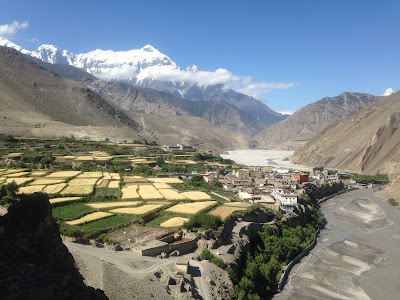Agriculture in Nepal
Nepal is most beautiful country. In Nepal the economy is dominated by agriculture. In the late 1980 it was the living for more than 90 percent of the population though only just about 20 percent of the total land area was cultivable, it accounted for, on average, about 60 percent of the GDP and around 75 percent of exports. Since the formulation of the Fifth Five Year Plan (1975–80), agriculture has been the highest priority because economic growth was dependent on both increasing the productivity of existing crops and diversifying the agricultural base for use as industrial inputs. According to the World Bank, agriculture is the main source of food, income, and employment for the majority.
In trying to increase agricultural production and diversify the agricultural base, the government focused on irrigation the introduction of new implements and new seeds of high-yield varieties, and the provision of credit. The lack of distribution of these inputs, as well as problems in obtaining supplies, however, inhibited progress. Although land reclamation and settlement were occurring in the Terai Region, ecological squalor and ecological imbalance resulting from deforestation also prevented progress.
Although new agricultural technologies helped augment food production there still was room for further growth. Past experience indicated bottlenecks, however in using modern knowledge to attain a healthy growth. The contradictory goals of producing cash crops both for food and for manufacturing inputs also were taxing
According to Statistical Information on Nepalese Agriculture (2008/2009) only 65.6% of people depend on agriculture and 21% of land is cultivated whereas 6.99% of land is uncultivated.
Rice is the most important cereal crop. In 1966 total rice production amounted to a little more than 1 million tons by 1989 more than 3 million tons were produced. Fluctuation in rice production was very common because of changes in rainfall; overall, however, rice production had increased following the introduction of new cultivation techniques as well as increases in cultivated land. By 1988 approximately 3.9 million hectares of land were under paddy cultivation other food crop included wheat, millet, barley and coffee, but their contribution to the agricultural sector was small
Himalayan Smile Treks and
Adventures Pvt. Ltd.
Email: sales@himalayastrek.com|info@himalayastrek.com
Seven Corner Road | Thamel | G.P.O.Box No.13216 |
Kathmandu | Nepal
Tel: 977-1-4700386 | 977-1-4700446 | Fax: 977-1-4701336
Skype: himalayan.smile.treks
Web: www.himalayastrek.com | www.himalayansmiletrek.com
Skype: himalayan.smile.treks
Web: www.himalayastrek.com | www.himalayansmiletrek.com





Comments
Post a Comment